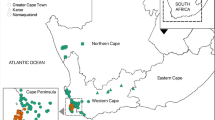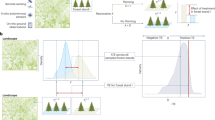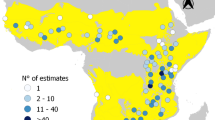Abstract
THE controversy among ecologists on ‘density dependence’ swelled out of all proportion due to differences among authors in the meaning and use of such words as ‘carrying capacity’, ‘competition’ and ‘density’. Beneath these unimportant disagreements, however, there lies at least one fundamental question which has seldom been investigated: Does an area have for a species of organism a carrying capacity with the property that the population decreases when it exceeds the carrying capacity and increases when it is less ? Few doubt that each area has such a carrying capacity in theory, but there is little evidence that the carrying capacity is ever reached or has much bearing on the actual size of population. Rather, as Andrewartha and Birch1 have claimed, it is often more useful to ask how recently the population met a catastrophe, to what level it was reduced, and at what rate it is able to recover toward the theoretical carrying capacity until it is overtaken by the next catastrophe. (Smith2, on the other hand, was able to detect evidence of a carrying capacity in Andrewartha's data, but even so it was rather poorly correlated with the actual population.) When extra vertebrates are stocked into an area their population quickly falls to the pre-stocked level3. Thus ecologists have long known that areas reached their carrying capacity in so far as vertebrate populations are concerned; the real question is whether the same is true with respect to invertebrates. It is the purpose of this communication to describe some experiments which not only demonstrate the existence of a carrying capacity for the checkerspot, Melitaea harrisii, but also to show, in general, what determines this carrying-capacity.
This is a preview of subscription content, access via your institution
Access options
Subscribe to this journal
Receive 51 print issues and online access
$199.00 per year
only $3.90 per issue
Buy this article
- Purchase on SpringerLink
- Instant access to full article PDF
Prices may be subject to local taxes which are calculated during checkout
Similar content being viewed by others
References
Andrewartha, H. G., and Birch, L. C., The Distribution and Abundance of Animals (University of Chicago, 1954).
Smith, F. E., Ecology, 42, 403 (1961).
Allen, D. H., Our Wildlife Legacy (Funk and Wagnalls, New York, 1962).
Dethier, V. G., Canad. Entomol., 91, 581 (1959).
Author information
Authors and Affiliations
Rights and permissions
About this article
Cite this article
DETHIER, V., MACARTHUR, R. A Field's Capacity to support a Butterfly Population. Nature 201, 728–729 (1964). https://doi.org/10.1038/201728a0
Issue date:
DOI: https://doi.org/10.1038/201728a0
This article is cited by
-
Inter-sexual and inter-generation differences in dispersal of a bivoltine butterfly
Scientific Reports (2021)
-
Dispersal and gene flow in a butterfly with home range behavior: Heliconius erato (Lepidoptera: Nymphalidae)
Oecologia (1986)
-
Mating behaviour of the tiger blue butterfly (Tarucus theophrastus): competitive mate-searching when not all females are captured
Behavioral Ecology and Sociobiology (1985)
-
An evolutionary-ecological model of the evolution of migratory behavior in the Monarch Butterfly, and its absence in the Queen Butterfly
Acta Biotheoretica (1982)
-
Energy limitation of hummingbird populations in tropical and temperate communities
Oecologia (1981)



